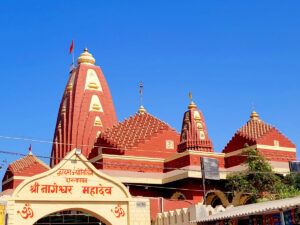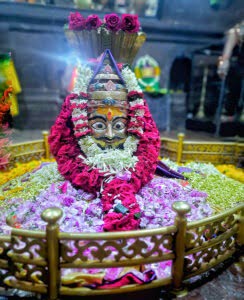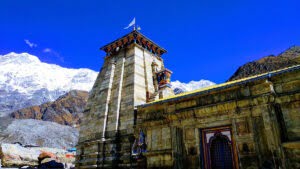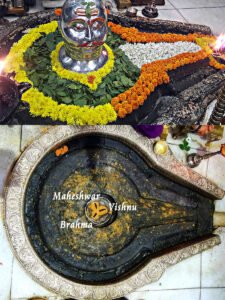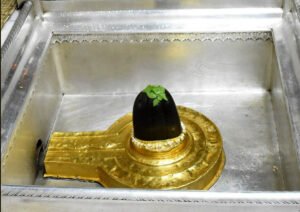Pawapuri Jal Mandir: Sinless City of Lord Mahavira
The Jal Mandir, meaning “water temple” in Hindi, is a Jain temple situated in Pawapuri (also known as Apapapuri which means “town without sins”), in the Indian state of Bihar. It is a major pilgrimage destination for Jains and the temple is dedicated to Lord Mahavira, the 24th Tirthankara (religious preacher of Jainism), which marks the place of his cremation. Mahavira attained Nirvana (death) in Pawapuri in 527 BC.
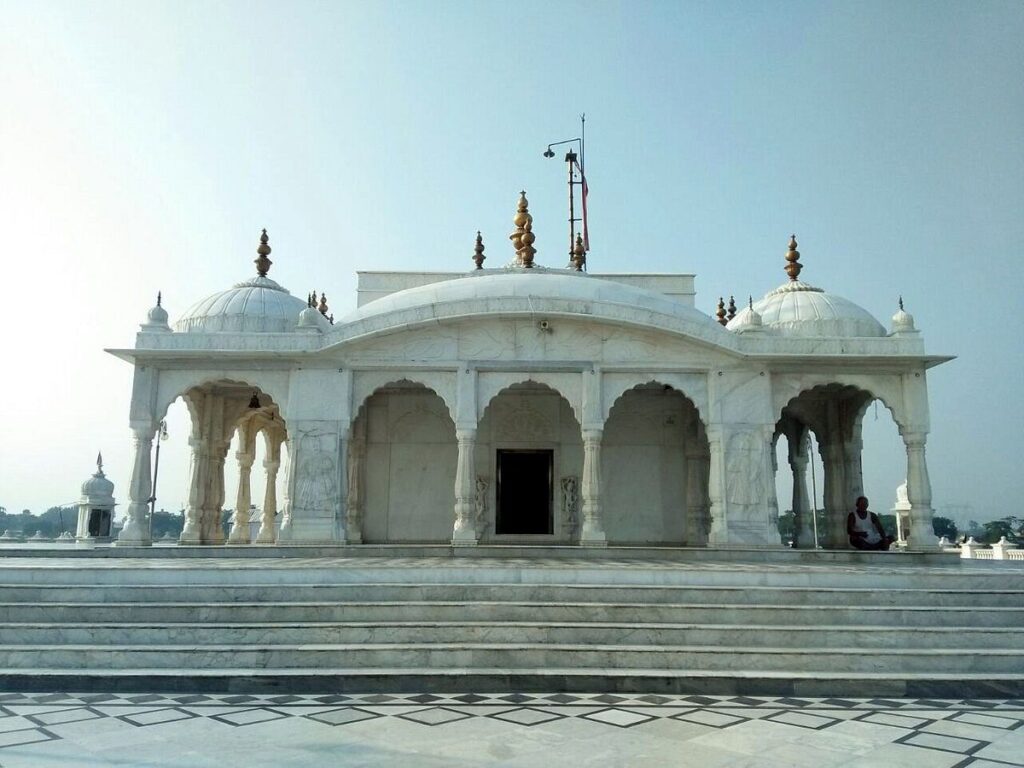
Contents
- 1 Jal Mandir History:
- 2 Legend of Jal Mandir:
- 3 Significance of Jal Mandir:
- 4 Myths and Beliefs of Jal Mandir:
- 5 Jal Mandir Timing & Rituals:
- 5.0.1 Temple Timings:
- 5.0.2 Rituals:
- 5.0.3 Nageshwar Jyotirlinga Dwaraka: 7th CE Temple with Divine Powers
- 5.0.4 Grishneshwar Temple: Wealth and Pleasure at Shiva’s Feet
- 5.0.5 Kedarnath Temple: One of Jyotirling & Char Dham
- 5.0.6 Trimbakeshwar Jyotirlinga Temple
- 5.0.7 Sacred Kashi Vishwanath Temple: 11th Jyotirling of Liberation
- 5.0.8 Aundha Nagnath Temple: 8th Jyothirling with Divine Serpents
- 6 Places to visit near Jal Mandir:
- 7 FAQ:
- 8 How to reach Jal Mandir:
Jal Mandir History:
Origin Story and Dedication:
- Located in Pawapuri, Bihar, Jal Mandir is believed to mark the cremation site of Lord Mahavira, the 24th Tirthankara (religious leader) of Jainism, who attained Nirvana (liberation) there in 527 BC.
- Legend states that a large number of pilgrims took soil from the cremation site, considered sacred. This created a huge pit that later filled with water, forming the present-day pond.
- To commemorate this holy site, a temple was built within the pond, known as Jal Mandir.
Attribution and Significance:
- According to tradition, the temple’s construction is attributed to King Nandivardhan, the elder brother of Lord Mahavira.
- Jal Mandir is one of the five most important Jain temples in Pawapuri. It enshrines the “Charan Paduka,” which translates to the footprints of Lord Mahavira, further solidifying its significance.
The Temple’s Environs:
- The white marble temple stands amidst a large rectangular pond filled with red lotus flowers, adding to its serenity.
- The name “Jal Mandir” itself translates to “Water Temple,” aptly reflecting its unique location within the pond.
Jal Mandir Today:
- It remains a major pilgrimage destination for Jains, attracting devotees from all over India.
- The temple’s tranquil atmosphere and historical significance make it a place of worship and spiritual importance.
Read More>> Parasnath Temple Giridih 2 BCE Jain Temple

Legend of Jal Mandir:
Lord Mahavira’s Nirvana: The legend states that Lord Mahavira, the 24th Tirthankara (Jain preacher) attained Nirvana (liberation from the cycle of rebirth) in Pawapuri around 527 BC.
Cremation Site: Following his Nirvana, Mahavira’s cremation became a pilgrimage site. Many devotees visited and collected some of the soil from the cremation pit, believing it to be sacred.
Creation of the Pond: This act of collecting soil created a large pit, which eventually filled with water, forming a holy pond.
Commemorative Temple: To commemorate the sacred cremation site, a temple dedicated to Lord Mahavira was built within the newly formed pond. This became the Jal Mandir, meaning “Water Temple.”
Read More>> Ranakpur Temple | Ranakpur Jain Temple Mystery
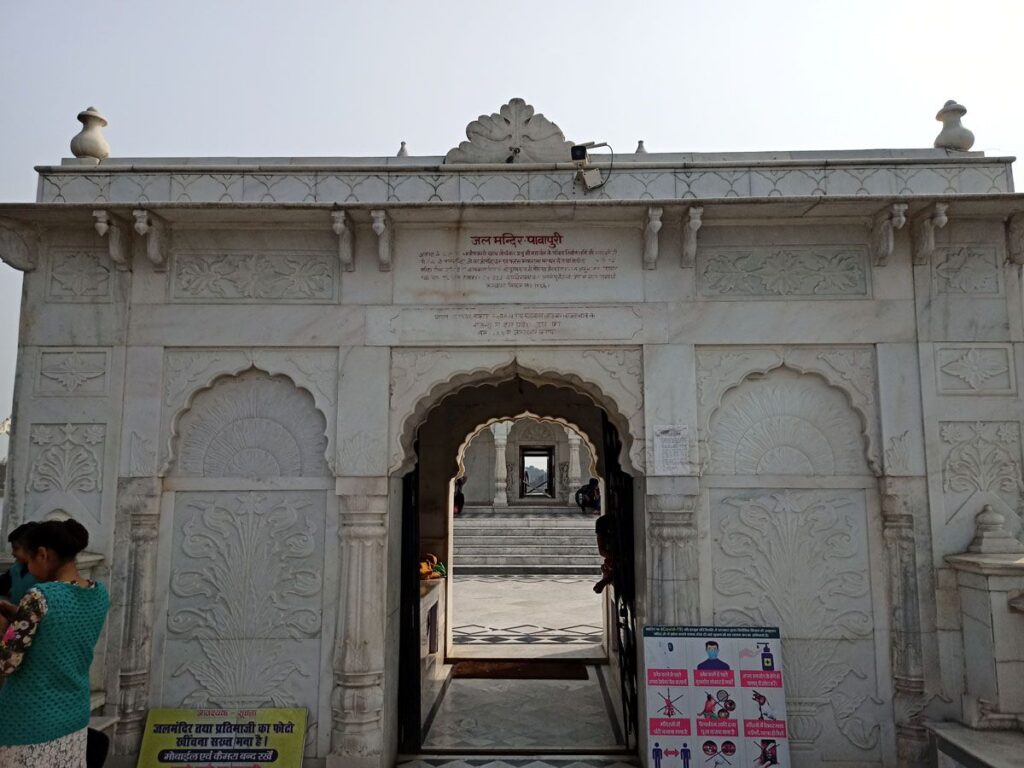
Significance of Jal Mandir:
Religious Significance:
- Commemoration of Mahavira: The Jal Mandir is situated in Pawapuri, believed to be the place where Lord Mahavira, the 24th Tirthankara (religious leader) and founder of Jainism, attained Nirvana (liberation) in 527 BC. The temple itself is built within a pond where devotees believe Mahavira’s cremation occurred.
- Pilgrimage Site: Jal Mandir is a major Jain pilgrimage destination. Jain followers visit to pay homage to Lord Mahavira and seek blessings.
- Footprint of Mahavira: Inside the Jal Mandir, the “Charan Paduka” or footprint of Mahavira is enshrined, adding to the temple’s sanctity.
Historical Significance:
- Ancient Legacy: The Jal Mandir is considered an ancient structure, believed to be built by King Nandivardhan, the elder brother of Mahavira. This connection to a historical figure adds weight to the site’s importance.
- Transformation of Cremation Site: The story behind the Jal Mandir itself is significant. Devotees are said to have taken away soil from Mahavira’s cremation site, creating a large pit that eventually filled with water and became a holy pond. The Jal Mandir’s construction within this pond signifies the transformation of a place of mourning into a revered site.
Read More>> Mahakaleshwar Jyotirlinga: Powerful Mahakal Temple in Ujjain
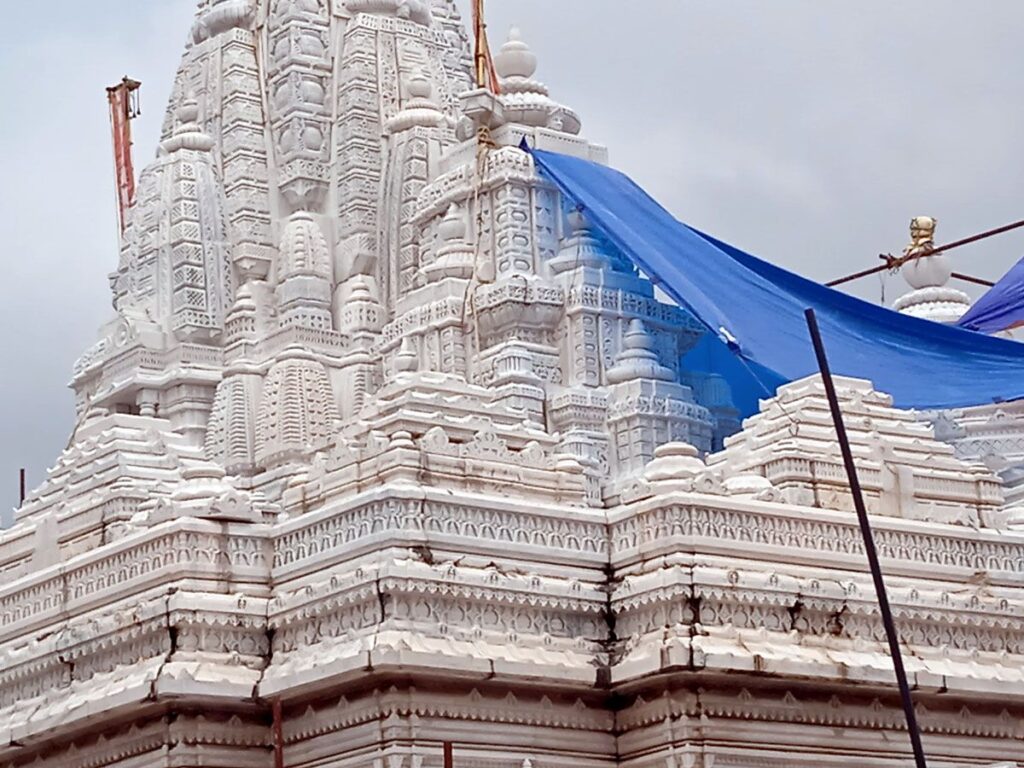
Myths and Beliefs of Jal Mandir:
Miraculous Pond: One belief suggests the pond surrounding the Jal Mandir miraculously appeared after devotees took away soil from Mahavira’s cremation site. This event signifies the transformation of a place of loss into a site of spiritual significance.
Blessed Waters: The water of the pond itself is believed to possess healing properties. Devotees bathe in it, believing it washes away sins and brings spiritual purification.
Wish-fulfilling Footprint: Inside the Jal Mandir lies the “Charan Paduka” or footprint of Mahavira. Some Jain followers believe that offering prayers and touching the footprint can bring good fortune and fulfill wishes.
Spiritual Abode: The Jal Mandir is considered a place where one can feel closer to Lord Mahavira’s presence. Devotees believe that meditating or offering prayers here brings inner peace and spiritual growth.
Connection to Asceticism: Jainism emphasizes non-violence and asceticism. The simplicity of the Jal Mandir’s structure, located amidst water, resonates with these values and serves as a reminder of Mahavira’s teachings.
Read More>> Sri Puri Jagannath Temple: The Lord of the Universe
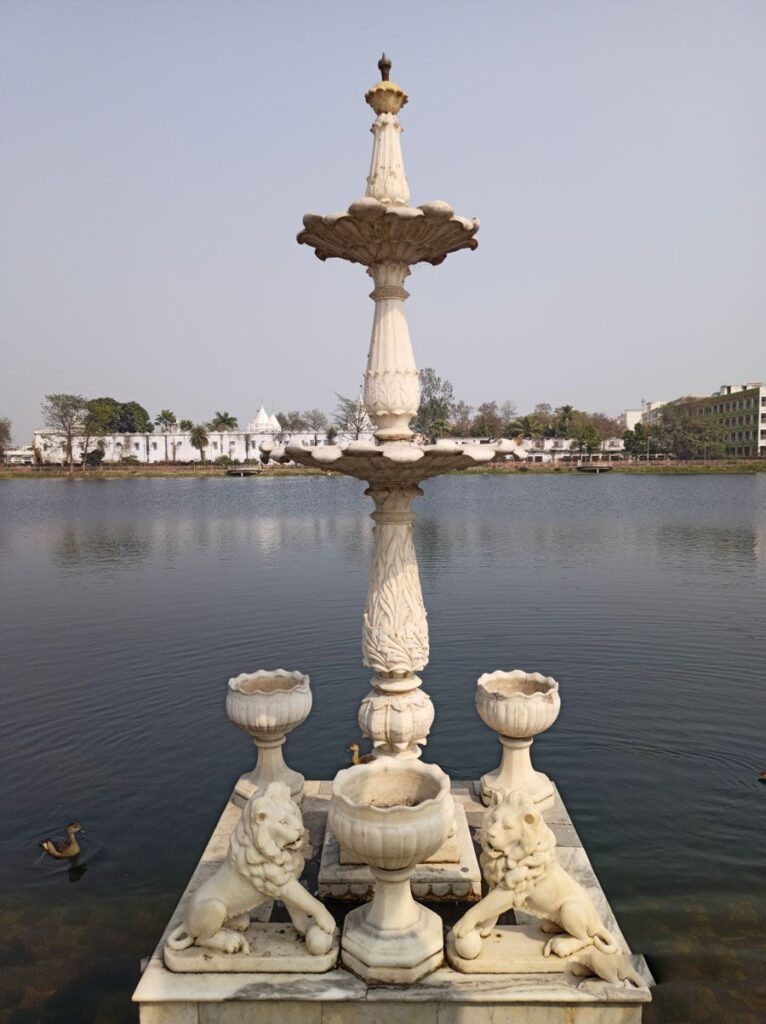
Jal Mandir Timing & Rituals:
Temple Timings:
- Jal Mandir in Bihar typically follows regular temple timings common to most Hindu and Jain temples in India.
- It opens early in the morning, usually at around 6:00 or 6:30 AM, and remains open until the evening, around 6:00 or 7:00 PM.
- However, it’s advisable to check the specific timings before planning your visit, as they may vary depending on the day of the week and any special events or festivals.
Rituals:
- Darshan (Viewing of the Deity):
- Devotees visit Jal Mandir primarily for darshan, which is the act of viewing and seeking blessings from the deity.
- Visitors offer prayers and bow before the idol of Lord Mahavira, expressing their devotion and seeking spiritual guidance.
- Aarti:
- Aarti is a ritual of worship involving the offering of light to the deity. It’s usually performed multiple times a day, particularly during morning and evening hours.
- During the aarti, lamps or candles are waved in front of the idol accompanied by devotional hymns, creating a serene and spiritual atmosphere.
- Pujas and Offerings:
- Devotees have the opportunity to participate in various pujas (ritual worship) conducted at Jal Mandir.
- Offerings such as flowers, incense sticks, fruits, and sweets are made to the deity as a symbol of reverence and devotion.
- Festivals and Special Occasions:
- Jal Mandir witnesses increased footfall during Jain festivals and special occasions, such as Mahavir Jayanti (the birth anniversary of Lord Mahavira) and Diwali.
- On these occasions, elaborate rituals, processions, and religious discourses may take place, attracting devotees from far and wide.
Places to visit near Jal Mandir:
- Pawapuri Jain Temple: This temple complex, also known as the Mahavir Mandir, is dedicated to Lord Mahavira, the 24th Tirthankara of Jainism. It is believed to be the place where Lord Mahavira attained Nirvana (salvation). The temple complex houses a beautiful marble idol of Lord Mahavira and attracts Jain pilgrims from around the world.
- Samosharan Temple: Located in Pawapuri, the Samosharan Temple is another important Jain pilgrimage site. It is believed to be the place where Lord Mahavira delivered his last sermon before attaining Nirvana. The temple features a large marble statue of Lord Mahavira in a seated posture.
- Nalanda: Approximately 26 kilometers from Pawapuri, Nalanda is renowned for its ancient Nalanda University, a UNESCO World Heritage Site. The ruins of this ancient university, dating back to the 5th century CE, offer insights into the rich history of education and Buddhist philosophy in India.
- Rajgir: Situated about 38 kilometers from Pawapuri, Rajgir is an important historical and religious destination. It is associated with both Jainism and Buddhism and is believed to have been visited by Lord Buddha during his lifetime. Rajgir is known for its scenic beauty, hot springs, and ancient sites such as the Griddhakuta Hill and Vishwa Shanti Stupa.
- Venu Vana: Located in Rajgir, Venu Vana is a beautiful garden believed to have been frequented by Lord Buddha for meditation. It is surrounded by lush greenery and offers a serene environment for relaxation and spiritual contemplation.
- Gridhakuta Hill: Also situated in Rajgir, Gridhakuta Hill is where Lord Buddha is said to have delivered many important discourses. It offers panoramic views of the surrounding landscape and is a popular spot for pilgrims and tourists alike.
FAQ:
- What is Jal Mandir?
- Jal Mandir, also known as the Jalakantesvara Temple, is a historic Hindu temple located in Vellore, Tamil Nadu, India. It is dedicated to Lord Shiva and is renowned for its unique architecture and association with water rituals.
- What is the significance of Jal Mandir?
- Jal Mandir holds significance as a place of worship and pilgrimage for devotees of Lord Shiva. The temple’s architecture, particularly its location surrounded by water, adds to its spiritual charm. It is believed that worshipping at Jal Mandir can bring blessings and fulfillment of desires.
- Where is Jal Mandir located?
- Jal Mandir is situated in Vellore, Tamil Nadu, India. It is located near the Vellore Fort and is easily accessible from various parts of the city.
- What are the temple timings?
- The temple timings may vary, but Jal Mandir is usually open to devotees from early morning to late evening. It’s advisable to check the specific timings before planning your visit.
- What rituals are performed at Jal Mandir?
- Various rituals are performed at Jal Mandir, including the Abhishekam (sacred bathing ceremony) of the deity, offering of prayers (pujas), and Aarti (ritual of worship involving the offering of light to the deity). Devotees also offer flowers, fruits, and other sacred items as part of their worship.
- Is photography allowed inside the temple?
- Photography policies may vary, but generally, photography is allowed in most parts of the temple. However, it’s advisable to respect the rules and regulations of the temple authorities and seek permission before taking photographs.
- Are there any festivals celebrated at Jal Mandir?
- Jal Mandir may celebrate various Hindu festivals throughout the year, with special rituals and festivities. Some of the major festivals celebrated at the temple include Maha Shivaratri, Navratri, and other auspicious occasions dedicated to Lord Shiva.
- Is there parking available near Jal Mandir?
- Yes, there is usually parking available near Jal Mandir for the convenience of devotees and visitors. However, during peak times or festivals, parking may be limited, so it’s advisable to arrive early or use public transportation if possible.
How to reach Jal Mandir:
By Air: The nearest airport to Pawapuri is the Gaya Airport (also known as Bodhgaya Airport), located approximately 78 kilometers away. From the airport, you can hire a taxi or use other local transportation options to reach Pawapuri.
By Train: The nearest railway station to Pawapuri is the Rajgir Railway Station, which is about 6 kilometers away. However, Rajgir is a small railway station, and not all trains stop here. Alternatively, you can take a train to Gaya Junction, which is a major railway station well-connected to various cities across India. From Gaya Junction, you can hire a taxi or take a bus to Pawapuri.
By Road: Pawapuri is well-connected by roadways, and you can reach here by bus, taxi, or private vehicle.
- If you’re traveling from nearby cities like Patna or Gaya, you can take a bus or hire a taxi to reach Pawapuri.
- If you’re driving, you can use GPS navigation to reach Pawapuri. The roads are generally in good condition, making it a comfortable journey.

